Beauty mostly lies in simplicity, doesn’t it?
This is true for design, for speech and writing, in makeup and dressing up, and also in health and fitness.
Count the small things in, and build on them. Rather than a top-down approach where you look for one-two hour exercise routines.
One such simple exercise is the Anjali Mudra. We used to practice this unconsciously hundreds of times a day, until we started to shake hands instead and lost the flow. But the Anjali Mudra is not just about joining hands.
Read on!
Time commitment : 5 minutes everyday
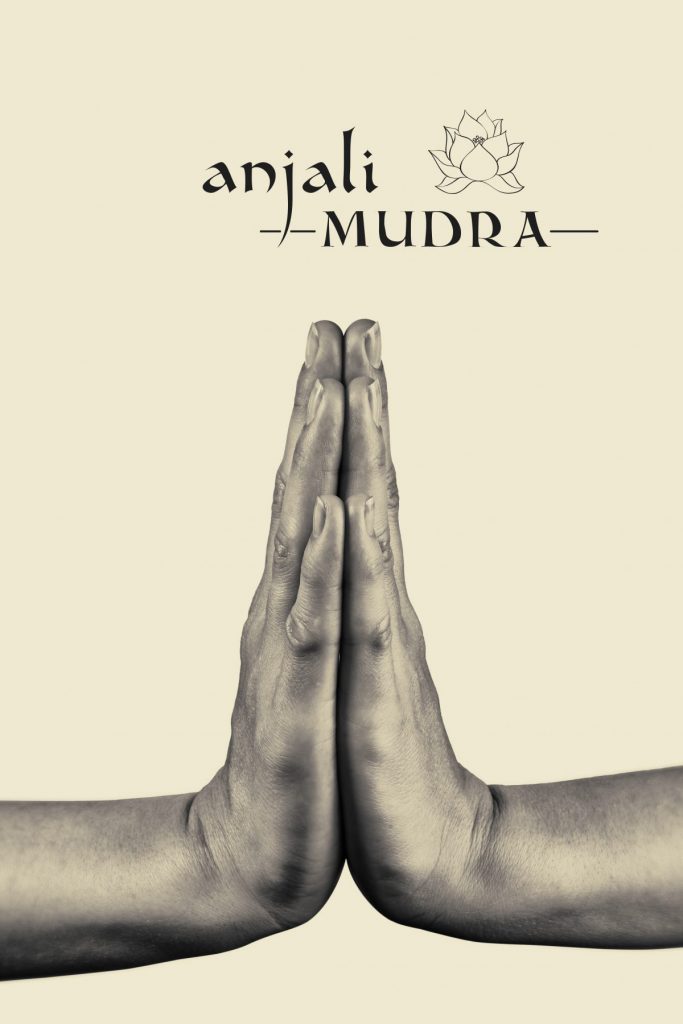
Today, we will practice an introductory mudra – the Anjali Mudra. I have made a lot of references to this mudra in my earlier articles, and a lot of you requested for a more detailed look into the mudra. While mudras are of many types, I will restrict this discussion to hasta (hand) mudras.
A few points to note:
- Exercise vs. Subtle energy – Mudras can be very beneficial for the physicality of the hands. You can approach mudra practice as an exercise, in which case, you can extend the fingers vigorously and activate your muscular strength when performing the mudras. For more subtle energy effects, soften the hands.
- Gentleness – While this mudras is easy to perform, you can experience some soreness if they are held for a long time. Ensure that you complete the warm-up routine, and also hold the mudra gently.
- As with most yogic practices, mudras should be practiced on an empty stomach. Wait at least 2-3 hours after a light meal.
How you do it
Physical
Warm up
Take a deep inhalation, and hold your breath. Clap your hands till you feel the sting a little.
Exhale, and breathe normally. Now rub your hands vigorously, for one minute. Make sure to rub all parts of your hand – the fingers, the palms, back of the hands, and in between your fingers as well. Very similar to our newly-found expertise on washing hands.
Once your hands feel warm, they are ready for mudra practice.
Seating
Sit in a comfortable position. Ideally in Sukhasana or Vajrasana. Avoid sitting on a chair. Keep your back straight. If you find this difficult, try the Vajrasana posture since the back is naturally straight in this āsana. Breathe normally.
Anjali Mudra
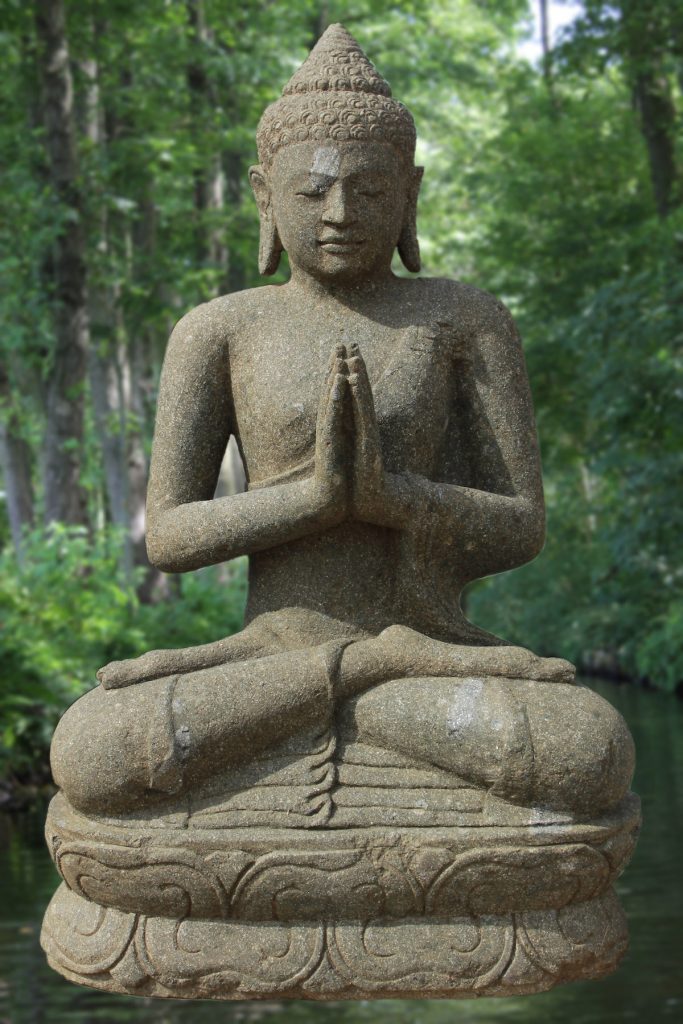
Bring your hands together lightly at the fingertips, as if praying. There should not be any pressure in this movement, but you do want to feel the heat between the palms. Touch all finger tips and the outer part of your palms together while cupping each hand slightly.
Hold your hands in front of your heart. To do this, draw your hands to your breastbone, elbows straight and parallel to the floor, in alignment with your wrists in a straight line, thumbs against the chest.
Keep your torso straight and upright, and draw your shoulder blades down into the back.
Close your eyes and focus on the energy that you feel in your hands, your finger tips, and at the place of joining the heels of your palms. Breathe normally.
Recognise the sensations and subtle vibrations that you feel. Sometimes, you may feel attraction at the place of joining, sometimes a subtle repulsion.
Hold the position for 10 breaths.
Slowly detach your fingers from each other and separate the palms. Distance your hands slowly, and feel the energy bonds between your hands as they separate. Let your hands relax at the sides of your body, or on your thighs.
This is one round. Practice 5-10 rounds.
Breathing
Gentle breathing, without strain or effort. Take in deep slow inhalations, with an expanded chest, and deep slow exhalations, with your stomach moving towards your spine. Your breathing should not be noisy – rather, should feel like the gentle waves of a calm ocean.
Awareness
Maintain awareness on your hands – the fingers, palms, joints and the energies that flow between them.
Notice the sensations and subtle vibrations when you bring them together, then at the point of contact – feel the energies of the right and the left sides interact. You may feel a soft attraction or repulsion at the place of joining – be aware of this sensation, and notice if it changes during the practice. When releasing the mudra, feel the energy bonds between the fingers as they separate. Notice if this changes during the course of the practice.
The key to mudra practice is to be aware of every part of your hand, and to recognise the energies that change as you go through the mudra.
Benefits
If done correctly, the Anjali mudra increases the flexibility of the wrists and joints of the hands. It helps to calm the mind, to relieve stress, and improve focus and attention. On a subtler level, practice of the Anjali mudra promotes inner awareness and connects the right and left hemispheres of the brain, leading to a more balanced outlook.
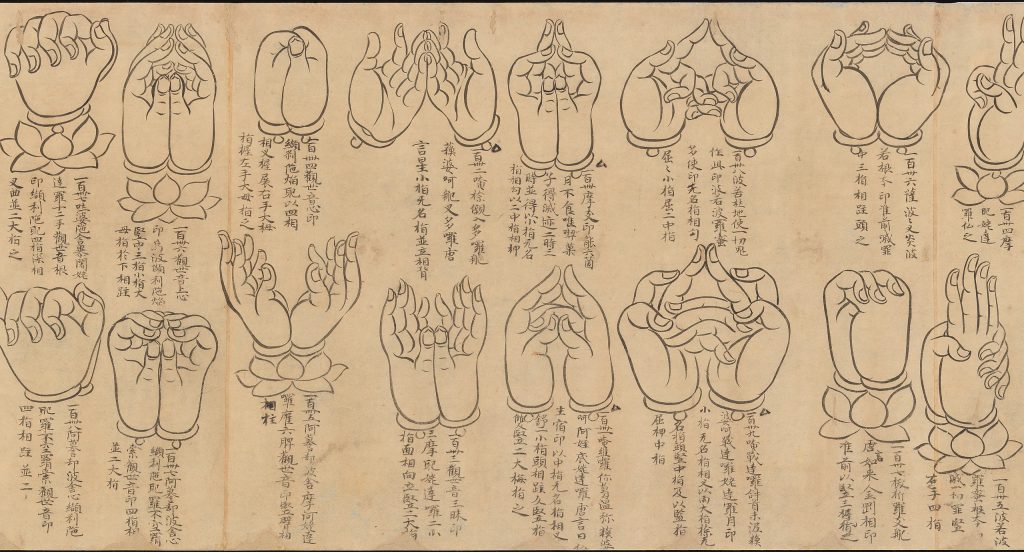
Our hands are an extension of our mind, our thoughts. When angry, our fists clench unknowingly, when happy, our hands are open and turned upward. Our ancestors viewed the human hand as a representation of the Universe, the pancha maha bhutas, or the five elements. The angushta (thumb) represents agni, or fire, the tarjani (forefinger) represents vayu, or air, the madhyama (middle finger) represents akasha, or Ether/Space, the anamika (ring finger) represents prithvi, or earth, and the kanishta (little finger) represents apas, or water.
The science of recognising these energies and reaching an inner and outer balance through practice of mudras is called Yoga Tattva Mudra Vigyana.
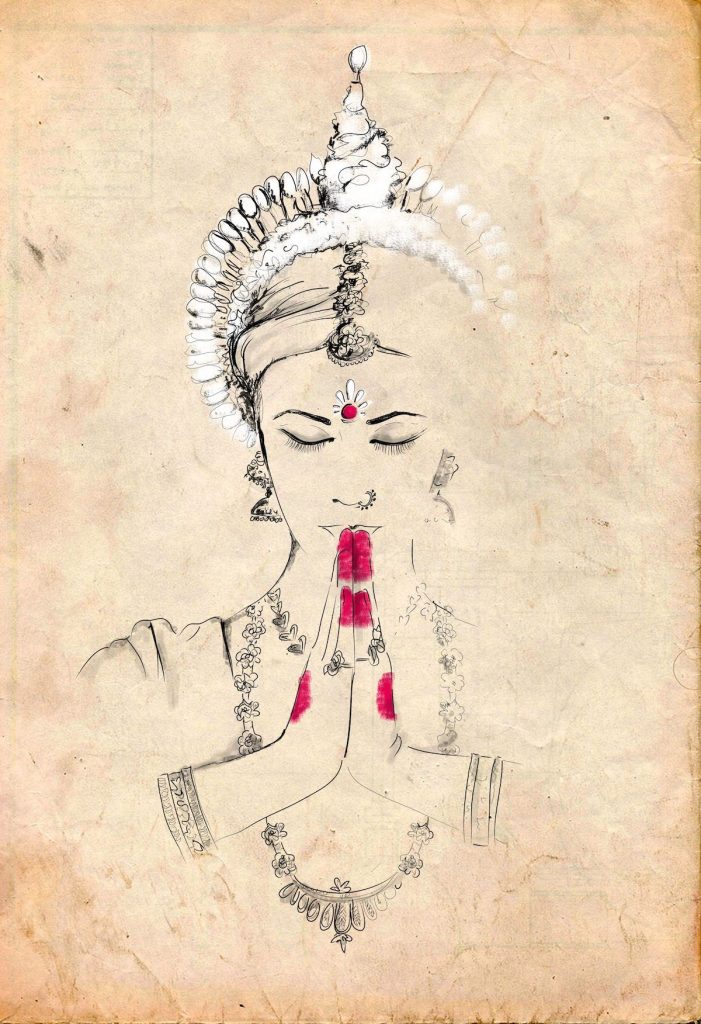
Mudra can be roughly translated as gesture or attitude, and represent psychic, emotional, devotional and aesthetic attitudes. Hasta mudras are mudras of the hands, either individually, or both. Indian classical dance employs a lot of hand gestures – these were known as hastas, to differentiate them from mudras, which were mostly used in religious rituals. In the last two centuries however, the term mudra is used for dance gestures as well. The Abinaya Darpana conveys the importance of hasta mudras beautifully, in a favourite sloka of mine:
यथो हस्त तथो दृष्टि, यथो दृष्टि तथो मन: |
यथो मन: तथो भाव:, यथो भाव तथो रस: ||
“Where the hands(hasta) are, go the eyes (drishti); where the eyes are, goes the mind (manah); where the mind goes, there is an expression of inner feeling (bhaava) and where there is bhaava, mood or sentiment (rasa) is evoked.”
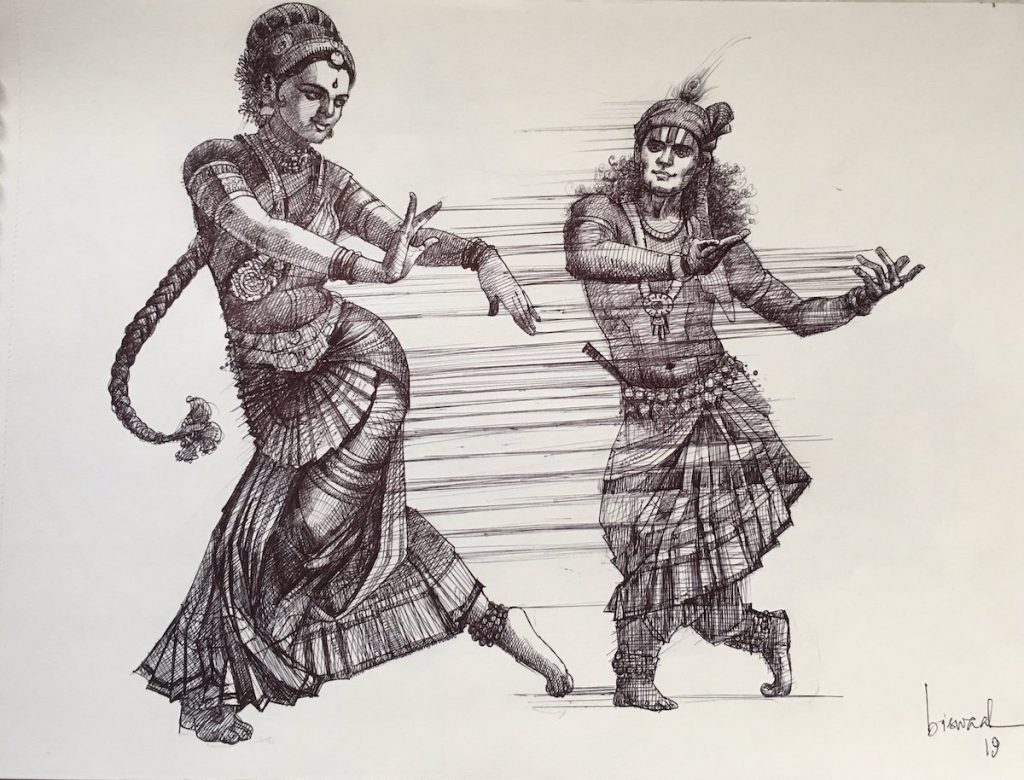
Based on the Yoga Tattva Mudra Vijnana, there are three basic effects resulting from the practice of yoga mudras:
1.Toning—The tip of the thumb touches the base of any finger. Touching the tip of the thumb to the base of any finger will increase the bhuta associated with that finger. For example, touching the thumb to the base of the forefinger will strengthen the vaju bhuta, or earth element.
2.Sedating—Any finger covered by the thumb. Covering any finger with the thumb causes a sedation of the element associated with that finger. For example, covering the middle finger with the thumb, as in Shunya Mudra, sedates the Ether/Space element.
3.Balancing—The tip of the thumb joins with the tip of any finger. Touching the tip of the thumb to the tip of any other finger will bring the associated element into balance with the others. For example, joining the tips of the thumb and ring finger (in the gyana or chin mudra) will help balance the agni element.
The thumb is also said to represent universal consciousness, and the ring finger individual consciousness, and hence joining both brings about a merging of the Self into the Universal Consciousness.
Mudras have the potential to facilitate healing, aid concentration, intensify your meditation practice and help you connect with your body, your mind and your energies.
Everyone has their distinct experience when practicing mudras, something that is indescribable and cannot be generalised. Approach this practice with reverence, going beyond the physical, and into the realm of the known – but largely forgotten – our own Self.
तस्मात्सर्वप्रयत्नेन प्रबोध यितुमीश्वरीम्ब्र
ह्मद्वारमुखे सुप्ताम् मुद्रभ्यासम् समाचारेत्
Tasmaatsaroaprayatnena prabodhayitumeeshvareem. Brahmadvaaramukhe suptaam mudraabhyaasam samaacharet.
Hatha Yoga Pradipika (3:5)
Therefore, the goddess sleeping at the entrance of Brahma’s door should be constantly aroused with all effort, by per forming mudra thoroughly.
